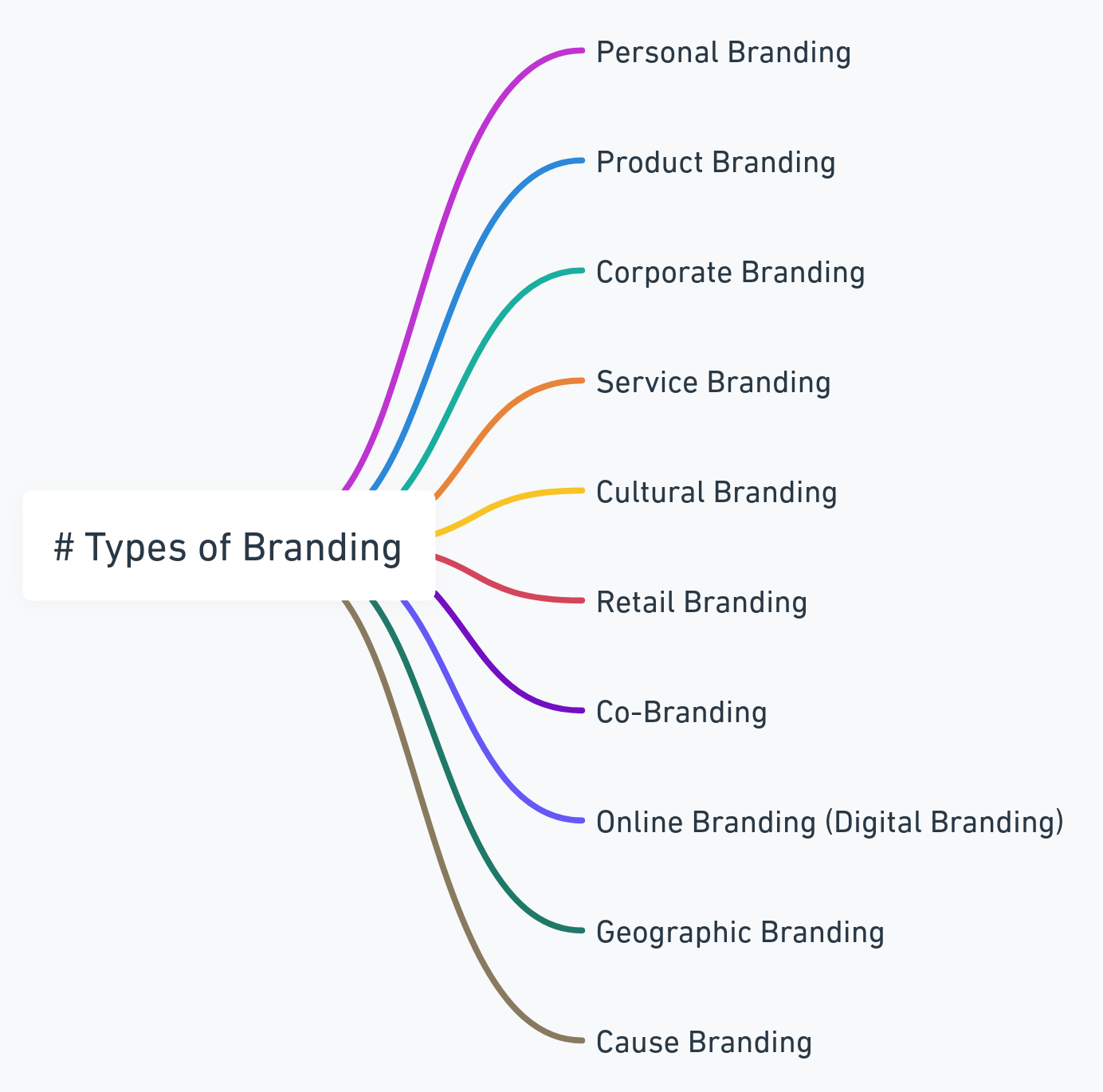Branding is part of the foundation on which effective marketing thrives, and in today’s marketplace, it represents a unique identity that commands the utmost importance. When you define branding in marketing, it is the strategic process of creating a distinctive name, symbol, design, or combination of elements that sets a business apart from its competitors. This process goes beyond visuals, encompassing the brand’s tone, messaging, and overall perception by the target audience.
The goal is to create a robust and recognizable presence in the market that not only attracts but also retains loyal customers. Branding helps communicate a company’s values, promises, and offerings consistently, fostering trust and emotional connections with consumers. It acts as a bridge between the business and its audience, making it easier for customers to relate to the brand. A strong brand generates recall and differentiation, ensuring it stands out in a crowded marketplace. Over time, successful branding contributes to building lasting relationships and enhances the perceived value of products or services.
What is a Brand?
A brand is an identity of a business as well as a public face. On the other hand, this would influence its perception of customers and competitors. Though founded upon tangible elements, like a logo or the products of a firm, yet more so by intangible elements: reputation, and the emotional attachment it commands. A brand that feels this would evoke loyalty from people with it. The business stands out in the already saturated marketplace. Brands add value to an organization, fine-tuning it to its objectives with customers’ desires. At some point in time, a brand may become synonymous with trust, perfection, and innovativeness; hence, building a stronger position in the market.
Features of Branding in Marketing
- Name and Logo: It should have a name that gives an impression at first, while a logo gives a visual view to prove quick recall and recognition. If positive, it may become iconical like golden arches from McDonald’s or Nike’s swoosh.
- Brand Promise: Promise to deliver specific value that creates reliance and sets consumer expectations. If kept well, the promise strengthened trust and eventually long-term relationships.
- Customer Experience: Every interaction shapes how customers perceive a brand. Positive experiences, from website navigation to customer support, foster loyalty, and advocacy.
- Brand Story: A compelling narrative gives a brand purpose and humanizes it, connecting with audiences emotionally. The story often reflects the company’s mission and values.
- Consistency: Aligning all brand elements ensures clarity and strengthens customer recognition across different channels and touchpoints.
Define Branding in Marketing
Branding in the marketing process defines a unified or unique identity so that it may align with the needs of people. It is not by advertising itself, but through communications and interactions towards customers that the objective of the company gets fulfilled. There’s a real possibility of business values getting placed in line with customer needs at the right stages, hence creating emotional and practical tie-ups. Branding helps a business connect the customer with topics of trust and loyalty, encouraging repeat purchases alongside word of mouth. Continuous branding over time causes the company to become an efficient competitor in the market, which makes it an industry leader.
Key Elements of Branding Marketing
Key elements of branding marketing form the foundation for creating a compelling and memorable brand identity. These elements work together to communicate the brand’s values, personality, and promise to its target audience, ensuring consistency and differentiation in a competitive market.
- Positioning: Space or place the brand occupies within the customers’ minds relative to competition. Right positioning would feature finding the USPs and fulfilling the needs of the customer.
- Messaging: All the communications convey the values and personality of the brand, hence intensifying resonance amongst the target group. Strong yet pertinent messaging resonates with customers.
- Differentiation: This will narrate why the particular brand is unique and why it’s different from competitors. An apt differentiation strategy will attract targeted customers.
- Customer Loyalty: This bonding is emotional with shared values, and quality delivery and hence creates long-term bonding with the customer. Usually, these loyalty programs together with communications back this bonding process.
- Channel Consistency: This ensures that individuals can see and later develop trust for a brand whether on the internet, in its retail store, or from other sources from the consumers themselves.
Core Functions of Branding in Marketing
The core functions of branding in marketing revolve around building a strong, recognizable identity that fosters trust and loyalty among customers. These functions ensure the brand’s values, messaging, and presence align seamlessly to create lasting impressions and drive engagement.
- Awareness: The campaigns clearly declare the values of the brand along with its offering. This, therefore, helps it to easily become identifiable in front of the potential customer. It is a step that lays the ground for customer trust.
- Engagement: Social media polls and personalized emails help deepen connections with customers through interactive marketing techniques. Loyal customers are likely to be engaged.
- Advocacy: It is the advocacy of satisfied customers that makes them the ambassador for the brand, and organic trust increases, so more audiences are attracted.
- Perceived Value: Brand marketing talks about the quality and uniqueness that merits premium pricing or niche positioning.
- Adaptation: It adapts to trends and preferences to make the brand relevant and appealing.
Types of Branding in Marketing
This is a term used to refer to various concepts. The knowledge of its different types helps businesses place themselves in the market. Each one of them serves a different goal and has a different purpose in marketing a product, an individual, or an organization. Here’s a detailed description of the major types of branding.

Personal Branding
Personal branding is more of a reflection on the identity of a person rather than of a company or product. It is very relevant to those working professionals, entrepreneurs, influencers, and public figures who have an interest in being different in the most competitive areas. Personal branding highlights distinctive qualities, expertise, and values that make an individual stand out and worthy of trust. For instance, a motivational speaker may establish his brand based on his speaking style, accomplishments, and personality characteristics. Personal branding requires communication consistently, that is, through social media, public appearances, and thought leadership content that enhances an individual’s reputation and credibility.
Product Branding
Product branding is the art of developing an identity for a particular product. It establishes the product along with its visual identity, which may include a logo, packaging, slogan, and advertising. This guarantees that the product is recognized immediately and becomes attractive to the intended audience. An excellent illustration of a product brand is Coca-Cola. With a red-and-white color scheme, a unique logo, and marketing communications that delivered messages, Coca-Cola was linked to a refreshing and merry experience. Product branding works to build customer preference, create loyalty for the product, and differentiate a product in markets that have fierce competition.
Corporate Branding
Corporate branding refers to the corporate identity of the organization. In this sense, it involves all the values, mission, and personality of a business at its core level instead of on its products or services. It builds a corporate identity that relates well with the customers, employees, and investors at large. Among the few companies with corporate branding are Apple and Google, emphasizing innovation, trust, and reliability. Corporate branding calls for overarching consistency in all touchpoints, be it internal or external communications, which will promise the customers and stakeholders at large the values of that organization through all its contacts.
Service Branding
The services branding focuses on the experiences the clients derive from services delivered by an organization. The main areas here are reliability, satisfaction, and emotions. For product branding, however, it is focused on tangible products. For example, hospitality brands such as Marriott or Ritz-Carlton are extremely popular for service branding in terms of service, quality, and luxury experiences. Service branding relies heavily on word-of-mouth marketing, customer testimonials, and customer reviews to build trust and credibility. It means to win every part of service delivery to the promise of a brand.
Cultural Branding
This attaches the brand to the way of life, belief, or socio-cultural movement. Here, it tries to address both the emotional self and the social self to create that sense of being in deep. This is why cultural branding does very well among younger generations who value the aspirations and ideals that they think are embedded in the brand choices they make. The Nike “Just Do It” campaign stretches the sports horizon, inspiring people with strength and power that it’s been identified as being a cultural icon of tenacity. Cultural Branding is one in which companies should respond to cultural trends in cultural branding. The message should be made culturally congruent with the stories told by the culture.
Retail Branding
It is building personality in a retail store or chain. It means the design of a consistent and interesting experience, which speaks of personality and values from the side of the brand. There is also an element such as in-store design, atmosphere, and service for customers, among others, that are also promotion campaigns. Many of these are part of effective retail branding for companies like IKEA and Starbucks as they give different atmospheres that can bring back customers and a very high degree of brand loyalty. All this is about providing a fun and memorable experience that will associate the customer with the brand.
Co-Branding
Co-branding is a strategy in which the co-branding features two or more brands colliding to obtain a common identity for the product, service, or campaign. This type of branding integrates the powers of both brands to reach a larger section of the crowd and provides an exclusive offering. For instance, when it partners with designers such as Off-White, Nike brings in Off-White’s high fashion appeal combined with the innovation of Nike into products that might attract followers of both. Co-branding requires close alignment of the values and objectives so that joint work can go in favor of both parties and audience penetration as well.
Digital Branding (Online Branding)
The meaning of digital branding is developing a brand in the virtual platform. In simple words, it includes developing a website, social media site activities, search engine optimization, content marketing, and online advertisements. As the trend of the day is to go online for any information or buying, companies of all sizes need digital branding. Companies such as Amazon have been able to master digital branding through the design of friendly platforms and ensuring strong engagement on social media. Digital branding forces businesses to be active, and responsive, and not deviate at all in what they say as a way to gain trust and awareness.
Geographic Branding
Geographic branding is very vital since it makes the region, city, or country market the characteristics and experiences. This would include Switzerland and its watches as well as tourism campaigns to promote the region as a luxurious and precise place, or Italy, for example, where there is a very artistic and cultural feel combined with very good food. For tourism boards, local firms, or government authorities searching for ways to attract tourists, investors, or even immigrants, this kind of branding is of top priority. Geographical branding involves telling stories, using imagery, and hosting events to make a place different.
Cause Branding
Cause branding is attaching a brand to a social, environmental, or ethical cause. These brands target customers who make purchasing decisions based on values and responsibility. Patagonia, for example, focuses on sustainability and environmental activism to appeal to those who live by such beliefs. Cause branding may be emotive and even generate loyalty among customers, but if it is authentic to the cause, otherwise it will brand it as opportunistic or greenwashing.
Importance Of Branding in Marketing
Branding gives the company an identity and is one of the main influencers of the behavior and decisions of the customers. It helps businesses stand out in the marketplace, which looks at most businesses as nothing but similar shapes, from noticing to holding onto the clients. Great branding builds emotions, extends beyond function, and instills trust and loyalty. As perceived value builds around products or services, companies achieve premium pricing. Moreover, employees align internally through branding efforts, ensuring that every piece of the business reflects its core values.
Benefits of Branding
- Awareness: A branded product becomes noticeable, thereby allowing the customers to recall it and thereby reduce marketing costs.
- Trust: A strong brand creates an impression of a professional organization, and therefore the customer is assured about the buy. Trust is built on quality and service consistency.
- Value Creation: Branding turns a commodity into a premium, and a premium price can be realized.
- Employee Engagement: Employees take pride and are motivated to go that extra mile when they work for a brand that others associate with power, which finally translates into good performance.
- The advantage in Competition: A superior brand is sure of customer loyalty and therefore less vulnerable to competitive price or marketplace shifts.
What is a Good Brand?
A good brand represents values and qualities that the audiences admire. Brand messaging is one thing that works coherently .It makes such a brand stick out in different fields and markets because it is consistent. Its relevance to customers makes it responsive to cultural, economic, and technological changes. Invest in building relationships to create strong emotional connections wherein the customer puts positive feelings before associating with a brand. Lastly, the best brands have a cause; they are doing something good for society or the environment that works towards adding to their reputation and goodwill.
Attributes of an Outstanding Brand
- Consistency: An excellent brand has consistency in the logo, tone, and messaging in all channels and touchpoints.
- Relevance: They not only meet but exceed customer expectations. Because, they can keep up with market preferences and the dynamic nature of those preferences over time.
- Versatility: The best brands are flexible since they must always change while keeping their core intact with times.
- Emotional Engage: Relatable stories, values, and their brand relationships build loyalty and advocacy for a lifetime.
- Product/Service Innovation: Great brands invest in creativity and remain ahead of the curve by offering unique and memorable experiences to their customers.
Branding In Marketing FAQs
Why is branding important in marketing?
Branding in marketing is the process that creates a business’s identity, fosters customer loyalty, and separates the company from its competitors.Hence it is important
What is brand equity in marketing?
Brand equity is the value a brand holds in the market, based on customer perception, loyalty, and awareness. This affects the premium price a company can charge for its products or services and maintain customers.
What is a good brand?
A good brand is authentic, consistent, and customer-focused. It stands out with its unique identity and continuously delivers on its promises.
What is the role of a brand in marketing?
A brand is essentially the face of a business. It reflects its values and purpose attracts customers and retains loyalty with a competitive advantage.
What is the difference in types of branding in marketing?
The personal, product, and corporate branding can differ from one focus to another-from individual identity to specific offerings or the company image.


